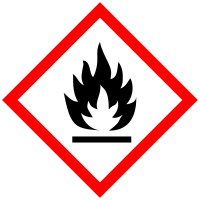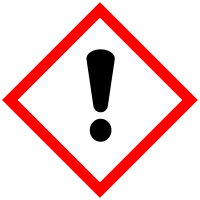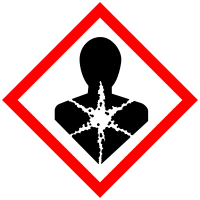
Improving Member States preparedness to face an HNS pollution of the Marine System (HNS-MS)
Ethylene Glycol Monomethyl Ether
Description Top
| CAS number | 109-86-4 |
| UN number | 1188 |
| Chemical formula | C3H8O2 |
| Standard European Behaviour Classification (SEBC) | Dissolves (D) |
| Abilities | Miscible in water. |
GESAMP Hazard profile
| A1 | A2 | B1 | B2 | C1 | C2 | C3 | D1 | D2 | D3 | E1 | E2 | E3 |
| NI | NI | NI | NI | NI | NI | NI | NI | NI | NI | D | NI |
Marine pollution Classification (MARPOL Annex II)
| Category | Description |
| Other Substances | Substances which have been evaluated and found to fall outside Category X, Y or Z because they are considered to present no harm to marine resources, human health, amenities or other legitimate uses of the sea when discharged into the sea from tank cleaning of deballasting operations. The discharge of bilge or ballast water or other residues or mixtures containing these substances are not subject to any requirements of MARPOL Annex II. |
Alternate names for this chemical
2-Methoxyethanol
Methyl Cellosolve
Methyl Oxitol
Methylglycol
Dowanol Em
Ethylene Glycol Monomethyl Ether
Ether Monomethylique De L'Ethylene Glycol
Methyl Cellosolve
Methyl Oxitol
Methylglycol
Dowanol Em
Ethylene Glycol Monomethyl Ether
Ether Monomethylique De L'Ethylene Glycol
Physico-chemical properties Top
| Chemical formula | C3H8O2 | ||
| Molar mass | 76.095 [g/mol] | ||
| Critical molar volume | 0.000263 [m³/mol] | ||
| State | Liquid at 25°C and 1 atm | ||
| Fusion temperature | -85.1 [°C] | ||
| Boiling temperature | 124.1 [°C] | ||
| Critical temperature | 597.6 [°C] | ||
| Density |
|
||
| Surface tension |
|
||
| Hydrosolubility |
|
||
| Vapour pressure |
|
||
| Critical pressure | 5285000 [Pa] | ||
| Vapour density | 2.62 | ||
| Flash point (Pensky-Martens closed cup) | 42 [°C] | ||
| Lower explosivity limit (LEL) | 2.3 [%] | ||
| Upper explosivity limit (UEL) | 24.5 [%] | ||
| Vaporization enthalpy |
|
||
| Combustion enthalpy | 21980699 [J/Kg] | ||
| Specific heat capacity | 2249 [J/(Kg·K)] | ||
| Henry's constant | 0.033 [mol/(m³·Pa)] |
Behaviour Top
| Log Kow | -0.77 |
| Log Koc | 0 |
| Hydrolysis (Half-life) | Not hydrolysable |
| Aqueous photolysis (Half-life) | Not photolysable |
| Standard European Behaviour Classification (SEBC) | Dissolves (D) |
| Bioconcentration factor (BCF) | 3 |
Ecotoxicity Top
| Lowest median lethal concentration (LC50) on crustacean | 1000 [mg/l] | |
| Lowest median lethal concentration (LC50) on fishes | > 10000 [mg/l] | |
| Assessment factor (AF) |
|
|
| Predicted No Effect Concentration (PNEC) |
|
Hazards Top



Danger
Hazards statements
Physical
H226
Flammable liquid and vapour.
Health
H302
Harmful if swallowed.
H312
Harmful in contact with skin.
H332
Harmful if inhaled.
H360
May damage fertility or the unborn child.
Precautionary statements
Prevention
P201
Obtain special instructions before use.
P202
Do not handle until all safety precautions have been read and understood.
P210
Keep away from heat/sparks/open flames/hot surfaces. No smoking.
P233
Keep container tightly closed.
P240
Ground/bond container and receiving equipment.
P241
Use explosion-proof electrical/ventilating/lighting/.../equipment.
P242
Use only non-sparking tools.
P243
Take precautionary measures against static discharge.
P261
Avoid breathing dust/fume/gas/mist/vapours/spray.
P264
Wash ... thoroughly after handling.
P270
Do no eat, drink or smoke when using this product.
P271
Use only outdoors or in a well-ventilated area.
P280
Wear protective gloves/protective clothing/eye protection/face protection.
P281
Use personal protective equipment as required.
Response
P312
Call a POISON CENTER or doctor/physician if you feel unwell.
P322
Specific measures (see ... on this label).
P330
Rinse mouth.
P363
Wash contaminated clothing before reuse.
P301 + P312
IF SWALLOWED: Call a POISON CENTER or doctor/physician if you feel unwell.
P302 + P352
IF ON SKIN: Wash with plenty of soap and water.
P303 + P361 + P353
IF ON SKIN (or hair): Remove/Take off immediately all contaminated clothing. Rinse skin with water/shower.
P304 + P340
IF INHALED: Remove victim to fresh air and keep at rest in a position comfortable for breathing.
P308 + P313
IF exposed or concerned: Get medical advice/attention.
P370 + P378
In case of fire: Use ... for extinction.
Storage
P405
Store locked up.
P403 + P235
Store in a well-ventilated place. Keep cool.
Disposal
P501
Dispose of contents/container to ...
GESAMP Top
GESAMP Hazard profile
| A1 | A2 | B1 | B2 | C1 | C2 | C3 | D1 | D2 | D3 | E1 | E2 | E3 |
| NI | NI | NI | NI | NI | NI | NI | NI | NI | NI | D | NI |
A1: Bioaccumulation
| Rating | Description |
| NI | No Information |
A1a:
| Rating | Description |
| NI | No Information |
A1b:
| Rating | Description |
| NI | No Information |
A2: Biodegradation
| Rating | Description |
| NI | No Information |
B1: Acute aquatic toxicity
| Rating | Description |
| NI | No Information |
B2: Chronic aquatic toxicity
| Rating | Description |
| NI | No Information |
C1: Acute oral toxicity
| Rating | Description |
| NI | No Information |
C2: Acute dermal toxicity (skin contact)
| Rating | Description |
| NI | No Information |
C3: Acute inhalation toxicity
| Rating | Description |
| NI | No Information |
D1: Skin irritation or corrosion
| Rating | Description |
| NI | No Information |
D2: Eye irritation
| Rating | Description |
| NI | No Information |
D3: Long-term health effects
| Notation | Hazard endpoint | Description | GHS category |
| No Information |
E1: Tainting of seafood
| Rating | Description |
| NI | No Information |
E2: Behaviour of chemicals in the marine environment
| Rating | Description |
| D | Dissolves |
E3: Interference with the use of coastal amenities
| Rating | Description |
| NI | No Information |
GHS Security Information



Danger
About the project
HNS-MS is a decision-support tool that Belgian and French maritime authorities as well as coastguard stations can activate in order to forecast the drift, fate and behavior of acute marine pollution by Harmful Noxious Substances (HNS) accidentally released in the marine system.
Contact us
Copyright © 2015–2026 HNS-MS Consortium
 HNS-MS has been funded by DG-ECHO under agreement ECHO/SUB/2014/693705 and runs from 1 January 2015 to 31 March 2017.
HNS-MS has been funded by DG-ECHO under agreement ECHO/SUB/2014/693705 and runs from 1 January 2015 to 31 March 2017.